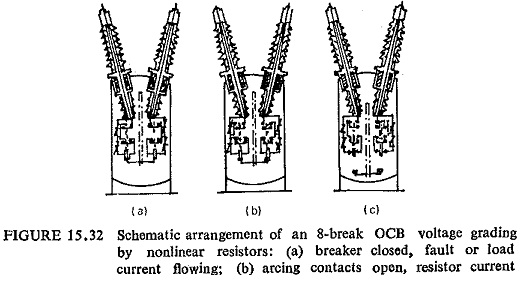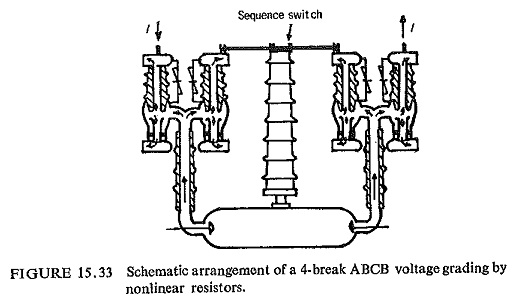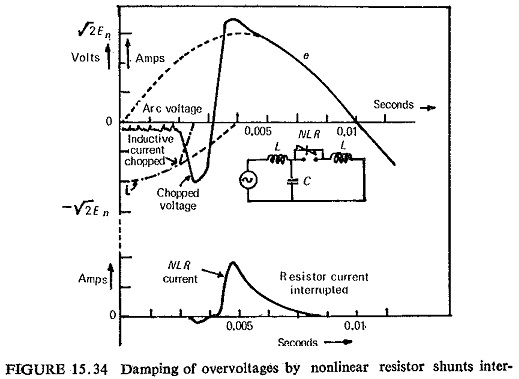Non Linear Resistance Shunts:
Non Linear Resistance are especially suitable, both from space and reliability considerations for small shunt currents in conditions where wire-wound resistors tend to be less satisfactory on mechanical grounds. Where heavy currents are involved, there may be difficulty in accommodating the relatively large volume of resistor material that is required.
Non Linear Resistance are particularly suited to voltage division and overvoltage suppression applications in which relatively small current of the order of 1-10 A at normal crest voltage are adequate. They are not suitable for modification of RRRV and of the voltage peak. Figure (15.32) and Fig. (15.33) show the schematic arrangement for voltage grading with the help of nonlinear resistors in oil circuit breakers and air-blast circuit breakers respectively.
The nonlinear resistor ensures accurate voltage distribution across the breaks and, because of rapid increase in shunt current with rise in voltage, it suppresses overvoltages when switching small inductive currents (Fig. (15.34)). The shunt current is interrupted without difficulty by the sequence isolator in oil in case of oil circuit breaker. Although capacitance can also grade the voltage distribution across the multibreaks, it cannot damp the overvoltages. The Non Linear Resistance current can be so proportioned that it assists in the interruption of capacitive currents in a manner similar to that obtained by the use of linear resistors.
An approximate idea of the value of shunt resistor to perform various duties can be given as follows:
- To equalize voltage distribution across two or more breaks. High values (10,000-100,000 ohms) are required. Capacitors may also be used for this purpose.
- To suppress overvoltages due to current chopping. More important with air-blast breakers (10,000-20,000 ohms).
- To avoid damage when switching capacitive currents (2000-5000 ohms).
- To control RRRV values of 1000 to 2000 ohms required for oil circuit breakers where the resistors are most effective for low-current interruptions, and values of 50-100 ohms for medium voltage air-blast
The higher values, (i) and (ii), may well be nonlinear resistors. The low resistors of (iv) would require impracticably large nonlinear units and wire-wound linear resistors are used for this purpose.


